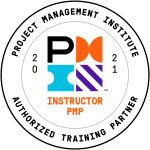LEED Certification Training (LEED-GA1)
Instilling sustainable practices can make you exceptional in your profession, as the global interest in adopting sustainable practices is gaining momentum. In this scenario, securing the LEED Green Associate credential will improve your prospects in the exhibition of green building practices as an architect, engineer, construction professional, or sustainability champion.
If you are interested in applying more sustainable design and construction to your work, this article will guide you to know more about this credential. Also, read to find out more about how BMTC Consulting offers adequate skill enhancement sessions for LEED certification training in Qatar to guide you to success.
What Is the LEED Green Associate Credential?
The LEED Green Associate (GA) is a globally accepted credential created by the U.S. Green Building Council (USGBC). It is an entry-level certification for those who would like to showcase a solid understanding of green design, construction, and operations.
This credential is perfect for professionals who:
- Need to prove their commitment to sustainable practices to employers or customers.
- Can work on LEED-certified projects.
- Keep up to date with green building technologies and trends.
- Improve their qualifications and career prospects in the green building industry.
Whether you’re new to LEED or already working in a sustainability-focused role, this certification validates your skills and prepares you for higher-level credentials, including the LEED AP.





